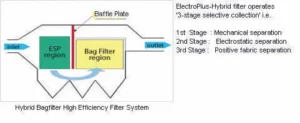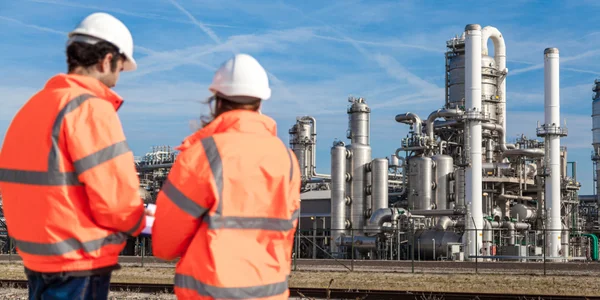ہائبرڈ فلٹرز
- Electrostatic Precipitators
- ریورس ایئر بیگ ہاؤسز
- فیبرک فلٹرز
- ہائبرڈ الیکٹرو فلٹرز
- فلو گیس ڈی سلفرائزیشن
- زبردستی ڈرافٹ کولر
- اسکربرز
- گیس صاف کرنے والے پلانٹس
- سائیکلون
- ملٹی کلون
- VOC + بدبو ہٹانے کا نظام
- دھول نکالنے کا نظام
- دھوئیں نکالنے کا نظام
- دھماکے سے بچاؤ کے آلات
- پنکھے اور بلورز
- گندے پانی کا علاج
- ایئر سے ایئر ہیٹ ایکسچینجر
دفاتر
ہیڈ کوارٹر

جرمنی
-
Intensiv Filter Himenviro Technologies GmbH
Neustraße 45 - 49, 42553, Velbert, Deutschland/Germany - +49 20534200990
علاقائی دفتر

برطانیہ
-
Intensiv Filter Himenviro UK Limited
47، باتھ سٹریٹ WS13BX، والسال ویسٹ مڈلینڈز، برطانیہ - +44 1922 628893
علاقائی دفتر

متحدہ عرب امارات
-
Intensive Filter Himenviro Technologies FZE – LLC
بزنس سینٹر، شارجہ پبلشنگ سٹی فری زون، شارجہ، یو اے ای - +971-556074697
علاقائی دفتر

انڈیا
-
انٹینسیو فلٹر ہیمین ویرو پرائیویٹ لمیٹڈ
D-247/11, Sector-63, Noida - 201301, Uttar Pradesh, India - +91-120-4642-500
علاقائی دفتر




انڈیا
-
انٹینسیو فلٹر ہیمین ویرو پرائیویٹ لمیٹڈ
D-247/11, Sector-63, Noida - 201301, Uttar Pradesh, India - +91-120-4642-500
علاقائی دفتر




انڈیا
-
انٹینسیو فلٹر ہیمین ویرو پرائیویٹ لمیٹڈ
D-247/11, Sector-63, Noida - 201301, Uttar Pradesh, India - +91-120-4642-500
ہائبرڈ الیکٹرو فلٹرز
ہماری، 'الیکٹرو-پلس-ہائبرڈ فلٹر' ٹیکنالوجی، ایک حل فراہم کنندہ ہے، کم دباؤ کے ساتھ زیادہ جمع کرنے کی کارکردگی کے لیے ذرات پر جامد بجلی کا استعمال کرتے ہوئے فلٹرنگ سسٹم کا استعمال کرتی ہے۔ یہ ایک روایتی بیگ فلٹر سسٹم کے معاملے میں، باریک دھول کے ذرات کے امپریگنیشن کی وجہ سے تھیلے میں جمنے کی وجہ سے اکثر دیکھنے میں آنے والے پریشر ڈراپ میں اضافے کے مسئلے کو حل کرتا ہے، جو بیگ کی زندگی کو کافی حد تک بڑھا دیتا ہے۔ ہائبرڈ فلٹر ایک اعلیٰ موثر اور اعلیٰ کارکردگی والا پیچیدہ فلٹر سسٹم ہے جس میں بیگ کی سطح پر ڈینڈرائٹ سٹرکچر لیئر سے دھول کے ذرات مائیکرو پارٹیکلز کے داخل ہونے سے روکتے ہیں اور فلٹر بیگز کی بلائنڈنگ سٹیٹس کو کم کرتے ہیں، اس طرح فلٹرنگ کی کارکردگی میں اضافہ ہوتا ہے۔ ہائبرڈ نظام. ہائبرڈ فلٹر ایک اعلیٰ موثر اور اعلیٰ کارکردگی والا پیچیدہ فلٹر سسٹم ہے جس میں تھیلے کی سطح پر ڈینڈرائٹ سٹرکچر لیئر سے دھول کے ذرات مائیکرو پارٹیکلز کے داخل ہونے سے روکتے ہیں اور فلٹر بیگز کی بلائنڈنگ سٹیٹس کو کم کرتے ہیں، اس طرح فلٹرنگ کی کارکردگی میں اضافہ ہوتا ہے۔ ہائبرڈ نظام.
درخواست






عمل
ہماری خدمات
اکثر پوچھے گئے سوالات
1. What is a hybrid filter?
A hybrid filter is a device that cleans dirty air by combining two methods: electrostatic precipitation and fabric filtration. First, it uses electrical charges to capture large dust particles. Then, it uses fabric filters to catch smaller particles, making the air cleaner and safer to breathe.
2. How does a hybrid filter work?
A hybrid filter works in two steps. First, the electrostatic section charges and captures large dust particles from the air. Next, the air passes through fabric filters that trap the remaining fine particles. This two-step process ensures efficient removal of dust and pollutants from the air.
3. Why are hybrid filters used in industries?
Industries use hybrid filters to keep the air clean by removing dust and harmful particles produced during manufacturing. This helps protect workers’ health, reduces environmental pollution, and ensures compliance with air quality regulations.
4. What are the benefits of using a hybrid filter?
Hybrid filters offer several benefits:
- اعلی کارکردگی: They effectively remove both large and small particles from the air.
- Energy Savings: The combination of technologies reduces energy consumption compared to using separate systems.
- لاگت سے موثر: They often require less maintenance and have longer lifespans, saving money over time.
5. In which industries are hybrid filters commonly used?
Hybrid filters are commonly used in industries such as:
- سیمنٹ کی پیداوار: To control dust emissions.
- Power Plants: To remove fly ash from flue gases.
- Steel Manufacturing: To capture metallic dust particles.
- Chemical Processing: To filter out hazardous airborne particles.
6. How does a hybrid filter compare to traditional filters?
Unlike traditional filters that use only one method, hybrid filters combine electrostatic and fabric filtration techniques. This combination allows them to capture a wider range of particle sizes more efficiently, leading to cleaner air and improved performance in industrial applications.
7. What maintenance is required for hybrid filters?
Maintaining a hybrid filter involves regular inspections to check for wear and tear, cleaning or replacing fabric filter bags as needed, and ensuring the electrostatic components are functioning properly. Following the manufacturer’s maintenance guidelines helps keep the system effective and extends its lifespan.
8. Can existing filtration systems be upgraded to hybrid filters?
Yes, many existing filtration systems, especially electrostatic precipitators, can be upgraded to hybrid filters. This upgrade enhances filtration efficiency without the need for completely new installations, making it a cost-effective solution for industries aiming to improve air quality.
9. Are hybrid filters environmentally friendly?
Hybrid filters are environmentally friendly because they effectively reduce the emission of harmful particles into the atmosphere. By capturing a broad range of pollutants, they help industries meet environmental regulations and contribute to cleaner air.
10. How do hybrid filters contribute to energy efficiency?
Hybrid filters contribute to energy efficiency by combining two filtration methods that work together to reduce the overall energy required for air cleaning. The initial electrostatic stage captures large particles with minimal energy, reducing the load on the subsequent fabric filter stage, which in turn operates more efficiently.








